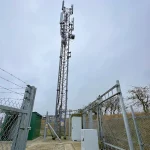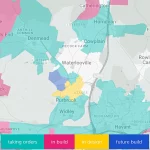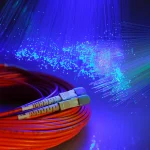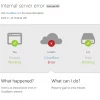After 34 Years AOL Finally Closes its Dial-up Internet Service UPDATE

In a somewhat surprising development, mainly because almost everybody assumed it had died a long time ago, AOL (America Online) – one of the very first consumer ISPs in both the USA and UK – recently caused a stir again by announcing that it had “decided to discontinue Dial-up Internet” on 30th September 2025.
According to AOL’s website: “AOL routinely evaluates its products and services and has decided to discontinue Dial-up Internet. This service will no longer be available in AOL plans. As a result, on September 30, 2025 this service and the associated software, the AOL Dialer software and AOL Shield browser, which are optimized for older operating systems and dial-up internet connections, will be discontinued.” But their email service will continue.
The change appears to have been announced within the past few weeks, although it wasn’t picked up more widely until journalist Ernie Smith noted it in a post on Bluesky. Just to be clear, the announcement above refers to the USA and Canada. However, we’re fairly confident that what remains of AOL UK (aka – TalkTalk) doesn’t have any legacy dial-up customers left, although we would have said the same about the USA and Canada too, until that announcement dropped (dial-up speeds in 2025 would be practically unusable). ISPreview is currently checking, just to be sure.
Advertisement
In case anybody has forgotten. The original AOL UK experience was somewhat of a walled-garden way of accessing the internet, which forced you to use the company’s own software and restricted your ability to access certain internet services. This had the benefit of simplifying the experience, but AOL later fell behind the curve and ended up being overtaken by rivals.
The Carphone Warehouse (CPW) ultimately won the auction to buy AOL UK’s Internet access business in 2006 for £370m (note: AOL’s content division became a separate business). At the time, AOL were the UK’s third-largest ISP with around 2.1 million customers (600,000 on dial-up and 1.5 million with broadband) and were later re-branded to AOL Broadband.
A second big change occurred on 29th March 2010, when CPW and TalkTalk separated (demerged) – the latter became a separate business, which included customers from CPW’s prior acquisitions (e.g. AOL Broadband, Tiscali etc.). Several more years passed until May 2014, when TalkTalk confirmed that AOL Broadband (formerly AOL UK) had stopped taking on new internet and phone customers (here), although no mention was made of the dial-up base.
We’re certain that plenty of our readers (those now of a certain age group) will have stories to share of the early AOL UK days. Yours truly only used the original service briefly, before promptly switching away as the UK’s then dialup (narrowband) internet market became more competitive, affordable and less restrictive. It’s a service I was glad to forget, but it played an important role.
Advertisement
UPDATE 12th August 2025
As expect, TalkTalk has informed us that they “do not have dial-up capability and haven’t for some time“.
Mark is a professional technology writer, IT consultant and computer engineer from Dorset (England), he also founded ISPreview in 1999 and enjoys analysing the latest telecoms and broadband developments. Find me on X (Twitter), Mastodon, Facebook, BlueSky, Threads.net and Linkedin.
« Hyperoptic Appoint Ex-Virgin Media UK Veteran Sam Horrocks as New CFO






















































I seem to remember they used to charge £15 a month to allow you to dial up via the freephone 0800 number and Joanna Lumley announcing “Welcome To AOL” & “You Got Mail”. I used to tie up the phone line for hours during peak Napster & the frustration when the call dropped half way through a download. Ultimately I left when I went to BT ADSL in 2002, BT were actually £5 a month cheaper than AOL’s offering.
AOL were my first ISP and I remember it being maybe a fiver a month plus a local rate call for a few hours of access per month.
I remember Joanna Lumley’s voice too, although I’m pretty sure they had her saying “You’ve got post!” back when I was using it around ’98.
After a few months I moved to Free Dot Net, which was charging £30 (plus local call rate) for two years of access. This was an incredible deal at the time, when all other ISPs still charged a monthly subscription, and before the likes of Freeserve came on the scene.
I remember Jonathan Bulkeley used to be the CEO of AOL UK. He wad an American and it was great fun getting his monthly news letters about adjusting to living in the UK. Great days before the Internet became the cesspit it is today.
Dial up in those day was an expensive way to get Internet access at home. Calls were costed per minute so Internet cafes sprung up everywhere. Some still exist.
AHH paying £2.95 or whatever it was per hour plus the phone call. I was lucky enough to be on the beta test when they launched the monthly service (think it was about 19.95 but that included an 0800 dialup number and “unlimited use”.
There is http://www.lynxnet.co.uk/dial-up.htm
It won’t work once the PSTN shuts. Modems can’t maintain a carrier detect over a VoIP connection.
This has no future and will stop working in a little over a years’ time, due to the impending closure of the PSTN (I doubt it even works today considering PSTN services are no longer purchaseable). The most that is going to happen is that someone will make a virtual Dial-Up Connection server software that can be used locally by a VM running an old operating system that supports Dial-Up, but which in the background just uses LAN to forward the requests at a rate-limited speed to simulate Dial-Up.
@125us
We have equipment in very remote locations that the only option is via dial up modem and my usb modem works fine over BT digital voice. I use it every day.
The number is sadly disconnected – a lot of the cheap 0845 dial up numbers discontinued after ~2020. RE the other comment – 1200 baud modems will still work over VoIP!
“The most that is going to happen is…”
nah they’re doing more than that. Of course people are just running modems back to back or through old PBXes to get much of the experience of dialling in, but others are playing with ISDN equipment to get V90/V92 or even ISDN all the way.
You can also turn it inside out. There are open source projects to create serial dongles that speak IP and SSH/telnet & pretend to be a modem, so that you can “dial in” to BBSes and the like on your old dumb terminal or micro.
In terms of whether modems will work over VoIP, BT seems confident that it will work well enough on their “pre digital phone line” solution. I would presume anyone using modems on a Sky or TalkTalk PSTN line has technically been doing it over VoIP for years anyway.
I used to spend what seemed to be a lot of time helping friends remove what I referred to as “the AOL virus” from their machines.
I was with them back in the day, I still remember the first time streaming video via ADSL.
We ultimately left though for “Be” because they introduced data caps and IIRC Be was also cheaper for that first year, been going between ISPs ever since.
Mark, I think you’ve transposed the A and I in the Note box… as so much AI news has trained your typing. Its Internet Access not Access Internet in the acroynm.
https://en.wikipedia.org/wiki/FRIACO
Flat Rate Internet Access Call Origination – FRIACO
I used to have dialup with supanet, adsl24, ukfsn and breathe back in old day. Suprised Breathe still using internet for both ADSL up 24Mbps and FTTC up to 80Mbps.
https://www.breatheinternet.com/fibre.html
Darn it, I still have one of their free CD-ROMs I never got around to using.
The eternal September began in 1993 so this would be 32 years?
Used AOL unlimited for home and work, used to connect over any spare analogue exchange line and leave the client with a long 0800 call lol
Downloading PBX software used to take a few hours, cool times
To be fair, for its era, not a bad service really
AOL was the best time of my inrnet life.. and I think always will be. The community feel and the teamwork of us voluneers was amazing (So was the fact AOL paid our phone bills)
Oh the memories! When the internet was a beacon of hope for the future and the possibilities of what humankind could achieve was positive. Look how far we have fallen in the last 25 years….what hope is left?
With them for years, they were great for their time. Seemed every computer mag had the AOL experience available on the CD stuck to the front cover. Quite pioneering.
We first got AOL back in 1996, using the built in 28.8Kbps modem on my Packard Bell PC. It came on a floppy disk at this time. To say it was exciting would be an understatement! You chose a “screen name” and would then have to sign up with a credit card, again all quite something back then. You then had to choose from a list of STD codes, to connect to a “node” which was nearest to you for local call rates. If I remember it was about £4.95 a month, which gave you about 5 hours inclusive plus the call rates so had to wait until after 6pm! It dialled up and connected with a “lightning strike” graphics. As someone else said, I think it was “You’ve got post” back in the early days too. The thing that really was incredible, was weather graphics that bounced up and down and chat rooms. It was a great time.
I thought AOL was dead tbh considering I think MSN is dead here.
My mum still happily uses an AOL email address though.
While of course there were the pure play ISPs pioneers in the early 1990s were the likes of Demon, Pipex Dial, CIX (although they did have a bit of a walled garden) who helped opened the Internet to members of the public in the UK, AOL along with CompuServe were the ones that really helped introduce the public to the Internet in a consumer friendly way and helped with the uptake of Internet access in British homes.
Once Freeserve came along (technically a virtual ISP, as they leased they effectively ran on-top of Planet Online’s infrastructure. POL was part of Energis at the time) they really changed the game and pretty much ended ISP subscriptions and their business model of taking a cut from local calls, really accelerated Internet uptake in the UK and led the decline and downfall of the likes of AOL.
Regardless of how I feel about AOL (I hated them posting endless CD-ROMs through my letterbox and awful software), I will give them credit for what they did in the 1990s to help introduce the Internet to many people in the UK for the first time in a fairly easy way (by Windows 3.1 and Windows 95 standards).
I remember CIS on a point of presence local number being groundbreaking, before then I connected online via Fidonet and the phone call was regional rate (BT charged local, regional, and national rates back then plus a higher price if you called between 8am and 1pm weekdays). When AOL came along it wasn’t for me but a family member took it out and used BT Home Highway to connect (basically ISDN). It was very good when used over both the ISDN channels, but very pricey.
We bought our first PC during summer 1996 and went with AOL as many of us did in the day.
The thing is, I’m still using the same free AOL email address after all these years which is 29 years for me.
I must have a few kB of email data on their servers after all this time. It would likely take me another 29 years to go back through them all and have a clear out
Not on AOL but had to wait until after 6pm to lock in the local call rate for 56k dialup in around 1999, so a little later on.
Haha! I totally forgot about waiting until it was the “cheap time” to use the Internet with off-peak call rates.
Those were the days!
ATH
Didn’t know that there were/are ‘Dial up’ services still operating. would be very useful to know as I’m residing in a temporary address and unable to get a BB connection for a maximum of 3 months without paying for 12 or 18 months service. As it is I go to the pub and use their Wi-Fi nightly. That does focus the mind on how much or little internet business I need to do.
Thought AOL went years ago. I remember their bloatware software on CDs on magazines; took over a computer if you simply run their setup.exe. I was Pipex briefly, never AOL, then Demon Internet, Freeserve then others I can’t even remember.